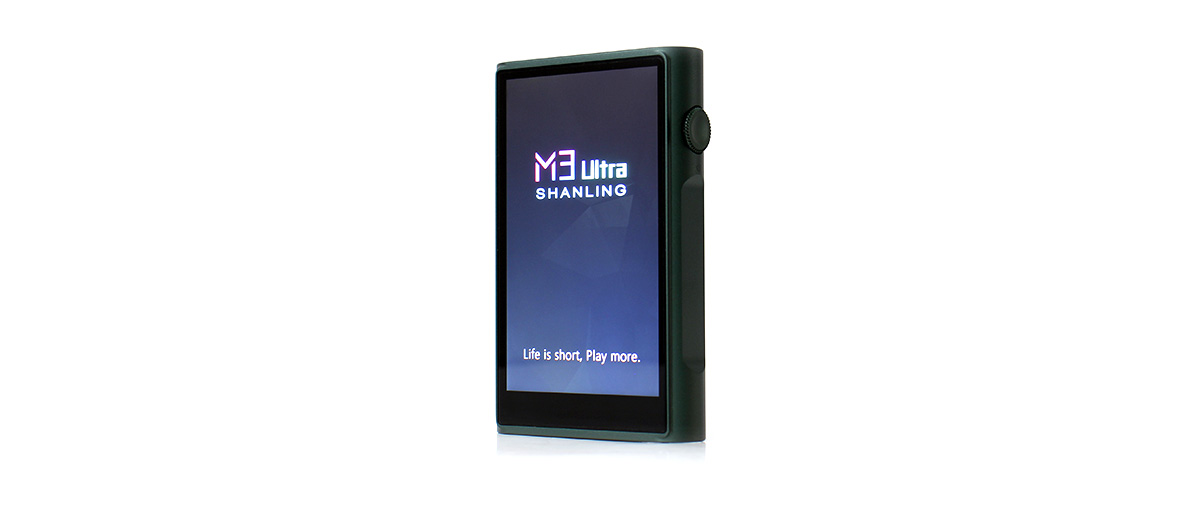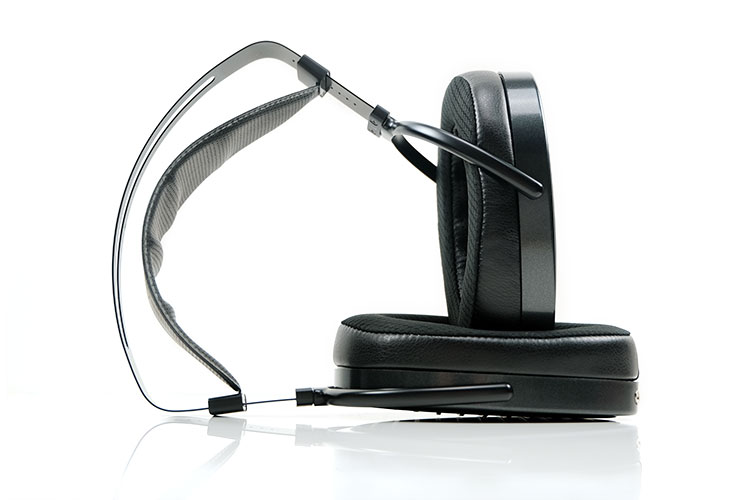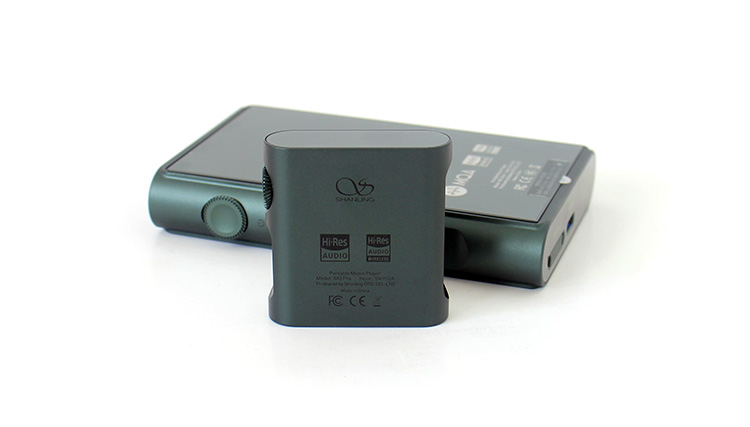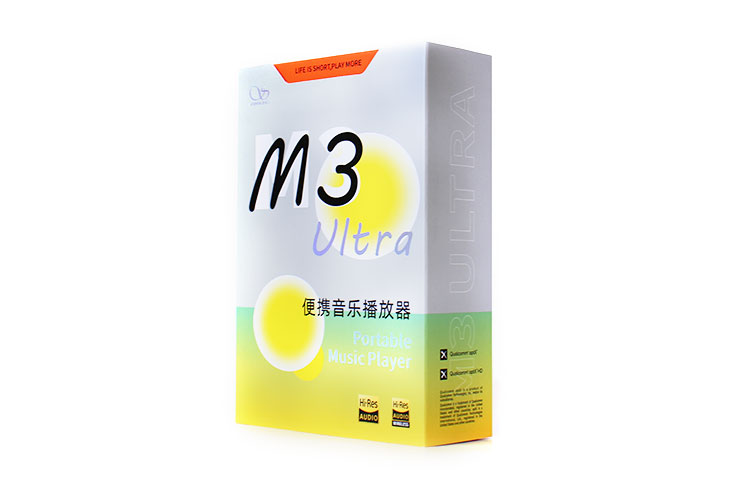Synergy
Efficiency
I’ve noticed that most modern-day dongle DACs and DAPs are using a mute feature or circuitry that mutes the audio or might even put the circuitry into sleep or suspend mode so it’s difficult to detect any hiss being produced by the M3 Ultra.
Unless you use a silent track you will not hear any hiss coming from the M3 Ultra. Regardless, the noise floor remains below 2µV which is inaudible if we trust the specs and use any modern-day IEMs.
IEM Pairings
I had a few IEMs laying around that I tried with the M3 Ultra to see if I could provoke hissing but it never happened. I tried the Thieaudio Oracle MKII, FiiO’s FH7s, and the FH9. I also tried some dynamic driver models like the FD7 and Hifiman’s recently released Svanar.
Most DAPs are designed to work optimally with IEMs and the M3 Ultra is not the exception except that it also can work with full-sized cans.
My favorite pairing was with the Svanars of course but it also seemed to like the FD7 and the FD5. It seems to like single dynamic drivers or perhaps that’s just my preference.
Power
Audio performance wise it seems to muster up a modest amount of power output rated at a maximum of 260mW at 32Ω and 164mW at 32Ω at the balance connector. Power output is dependent on what position the gain is set to and there are two.
Just the same, the single-ended side manages 140mW and 41mW both at 32Ω. Again, the figures reflect power output at either high or low gain. The output impedance on both connectors was listed at 1Ω.
The rest of the numbers read well like the DNR and SNR ratings which were listed at 121db but they get better on the balanced side at 124db. However, noise increases to 1.8µV from 1.5µV on the SE connection. Both are good numbers for IEM users, especially for hiss-prone IEMs but they would fare best going single-ended in this case.
Headphone Pairing
I didn’t have any issues running my second edition HIFIMAN Arya which have become my daily cans and are known not to be the most efficient cans out there. What’s surprising is that I was able to obtain a decent amount of quality bass.
I did get a feeling that Shanling is lowballing the specifications because the output seems more powerful than the listed numbers would indicate. If I was to compare it to the UA5 output which is similar on paper, I bet that same paper would say the M3 Ultra has a higher current output capability if measured.
I wouldn’t pair the M3 Ultra with high-current demanding headphones although it seems most will work just fine. Again, I bet the beefier DC-to-DC voltage regulation is partially responsible for pushing the M3 Ultra circuits past UA5 performance levels.
Select Comparisons
FiiO M11 Pro
$649.00
Technical
The FiiO M11 Pro is my first hard-core DAP that one can say has a significant amount of performance past the average Sansa device or mobile phone audio section.
However, I have this DAP and kept it because it turned out to be one of my favorites. The dual THX AAA78 implementation might have something to do with it along with a design that runs balanced or single-ended headphone outputs.
Instead of using Qualcomm the M11 Pro uses a Samsung six-core Equinox to run all the hardware. That includes dual AK4497EQ DACs. One drawback of these DAC chips is their inherent and notorious high power requirements and the main reason FiiO was forced to upgrade the battery from the previous M11.
Design
The FiiO M11 Pro is slightly larger and has a 5-inch screen and it shares the same glass back design as seen on the M3 Ultra. The chassis is also made in a similar manner which is made from a piece of CNC-machined aluminum.
Contrast is better highlighted on the M11 Pro compared to the levels on the M3 Ultra. However, if you use a magnifier you’ll notice the M3 Ultra has finer lines and a smoother appearance far as icons as if it was using anti-aliasing. Screen responsiveness and speeds seem similar.
Performance
If I had to drive nails with one of these DAPs I would choose the M11 Pro over the M3 Ultra due to it having almost 3 times the power output in mW. It also has a more upfront character far as sound presentation.
It seems there’s a more vivid sense emitted from the M11 Pro over the M3 Ultra but you might prefer the softer character of the Shanling. Passage transitions are most certainly harder and more impactful on the M11Pro.
Yes, most certainly the M11 Pro is the harder-hitting machine. But the fact that it has an older OS which might not receive any more updates from FiiO might make the M3 Ultra more future-proof. Plus the more carry-friendly bulk reduction of the M3 Ultra might tilt the scale.
Shanling MO Pro
$ 129.00
Technical
The phrase Mini Me comes to mind. This is an alternative if you want a smaller pocket-friendly device that sounds better than any mobile device you could purchase today. Notice, today’s comparisons are not of similar devices but of options.
The MO Pro with similar features only omits a few from its big brother. For example a 4.4mm connection, a downscaled OS plus the large screen but that’s it.
The MO Pro runs a Shanling customized OS that is simple to use but many features are well hidden and it will take some time to get used to where everything is. The screen swipe functions also take some getting used to. Gentleness and small strokes do the trick.
Design
There is an obvious downscale of the same concept at play since both these two units share the same look, volume knob design, and most other similar features like a 2GB capacity micro SD card slot and a similarly fabricated body.
You don’t get physical pause and play buttons along with track advance and backtrack, however. You get a file explorer, a music player, and Bluetooth but no WIFI connectivity.
Surprisingly, within the menu, there are two selectable DAC filters similar to the M3 Ultra and an equalizer that can affect the overall sound quality, unlike the M3 Ultra which has none and you can only tune sound within apps.
Performance
Of course, there’s a difference in performance but the gap narrows when you use sensitive IEMs and compare the two side by side. Performance differences are more apparent when you use high-current demanding headphones. Then you realize the upscale driveability available on the M3 Ultra.
When you use IEMs things get better for the MO Probably because it assimilates the single-ended output of the M3 Ultra while being a fraction of its size and that’s the MO Pro’s niche.
If you transmit from the Shanling MO Pro to a TWS set like the 1more EVO or a similar set that does LDAC, the scale tilts if you’re looking for ultra-portable and convenient. That’s audio you can take anywhere that can fit into the smallest of pockets. That’s appealing.
Our Verdict
The Shanling M3 Ultra is a device that takes care of most needs with one piece of gear albeit the dongle DAC to mobile device aspect. It falls midpoint between the DAP segment and offers what most people need and beyond.
It’s not the most powerful or luxurious DAP. It’s not the best performing or the best in screen image quality but I can’t fault any of those aspects on it either because it seems to perform all the general basic duties well while sounding good.
The M3 Ultra will appeal to the listener that wants a smooth sound presentation and a device that doesn’t lack features that can also be used as a standalone for those who want to simultaneously go portable but occasionally enjoy listening sessions in front of a desktop PC.
Shanling M3 Ultra Technical Specifications
- Dimensions : 109 x 70.5 x 18 mm
- Weight: 199g
- Screen: 4.2 inches 768 x 1280 touch screen
- System: Open Android 10
- Audio Formats: DSD/DST/ISO/DXD/APE/FLAC/WAV/AIFF/AIF/DTS/MP3/WMA/AAC/OGG/ALAC/MP2/MP4/AC3/M3U/M3U8/MQA
- Hi-Res Support: 32 bit / 384 kHz, DSD 256
- Gain setting: Two-level gain setting
- Memory: 3GB RAM and 32 GB ROM + Micro SD card slot
- DAC: 2x ES9219C
- Digital Filters: 2 Presets
- BT version: 5.0
- BT Codec support: Transmit LDAC /aptX HD / aptX / SBC receiver LDAC / SBC
- SE Output: Low Gain 41mW @32Ω high Gain 140mW @ 32Ω
- SE Noise: ≥117db/≥5µV on low Gain
- Balanced Output: Low Gain 164mW @ 32Ω High Gain 260mW @ 32Ω
- Balanced Noise: ≥114db / ≥8µV
- SN: Balanced 124db / SE 121db
- DNR: Balanced 124db / SE 121db
- Frequency response: 20Hz – 40kHz -2db
- Output impedance: 1Ω










